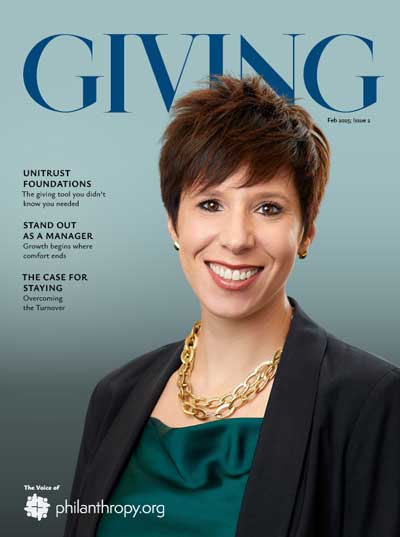Philanthropy has always been about solving the world’s biggest challenges, like providing access to education, healthcare, and support for those in need. But as more money flows into the nonprofit sector, more questions are being asked of nonprofit leadership. Most of them revolve around three topics:
-
- Where’s all the money going?
-
- How are decisions made?
-
- What’s actually changing?
These questions boil down to two simple yet powerful ideas: transparency and accountability.
Transparency and accountability are the foundations of trust, yet they’re also where many philanthropic organizations stumble. Let’s dive into what’s going on, why it’s happening, and how we can do better.
What’s the Deal with Transparency?
Transparency is about being open — sharing how decisions are made, where the money goes, and what results from it. But here’s the reality: many philanthropic organizations operate like a locked safe. Decisions are made behind closed doors, and donors, fundraisers, and communities are left in the dark.
Why does this happen? A few reasons:
-
- Legal Loopholes: Foundations aren’t always required to share detailed reports. They can follow the law without revealing much.
-
- Fear of Criticism: No one wants to air their dirty laundry. If a project fails, organizations fear it could scare off future donors.
-
- It’s Complicated: Big projects often involve multiple partners, making it hard to explain exactly where the money went.
But this lack of openness can—and does—backfire. People lose trust when they feel like they’re being left out of the loop, and for fundraisers, that trust is everything.
Why Accountability Matters
If transparency is about openness, accountability is about owning up—taking responsibility for how money is spent and whether it’s making a difference. Philanthropy thrives on trust, and accountability helps build it.
But here’s the challenge: proving impact isn’t always easy.
-
- Big Problems Take Time: If you’re funding education reform or fighting climate change, the results may take years—even decades.
-
- Who’s Watching?: Unlike public companies that report to shareholders, many philanthropic organizations don’t face the same level of scrutiny. This in a way gives them the freedom not to operate as a business should.
-
- The Power Problem: Let’s face it, big foundations with lots of money sometimes call the shots in ways that feel out of touch with the people they’re trying to help.
When accountability slips, it can create a disconnect between donors, organizations, and the communities they serve.
But when it works, it really works: There’s no denying the benefits of being upfront and responsible:
-
- Trust Builds Momentum: When donors see how their money is making a difference, they’re more likely to give again—and give more.
-
- Lessons Lead to Growth: Sharing successes (and failures!) helps everyone learn and improve.
-
- Stronger Connections: Openness fosters relationships between organizations, donors, and the communities they serve.
For example, some organizations use online dashboards to update donors on projects in real-time. Others host open forums to hear directly from the people impacted by their work. These small steps can make a huge difference.
But It’s Not Always That Simple
Of course, there’s another side to the story. Some argue that too much transparency can actually cause problems. Here’s why:
-
- It’s Expensive: Detailed reporting takes time and money—resources that small nonprofits may not have.
-
- Privacy Concerns: Not every donor wants their name or gift publicized. Some prefer to remain anonymous.
-
- Impact vs. Numbers: If we focus too much on measurable results, we might overlook programs with long-term or less tangible benefits, like art or cultural initiatives.
And then there’s the risk of playing it too safe. If organizations fear public backlash, they might avoid innovative projects that have a higher chance of failure but also greater potential for impact.
Finding the Sweet Spot
So, how do we find the balance? Here are a few ideas:
-
- Start Small: Transparency doesn’t mean sharing everything all at once. Begin with clear, simple updates on how funds are used and what’s being achieved.
-
- Embrace Feedback: Create spaces for donors and beneficiaries to ask questions and offer input.
-
- Use Tech Wisely: Tools like online updates or newsletters can keep people in the loop without overwhelming your team.
-
- Celebrate Growth: Share what went right—and what didn’t. Framing challenges as learning opportunities shows honesty and resilience.
For philanthropists and fundraisers, it’s also about asking the right questions. Where is the money going? Who’s involved? What happens next? These questions help create a culture of curiosity and accountability.
Let’s Talk About It
At its heart, philanthropy is about hope — hope that together, we can build a better world. Transparency and accountability aren’t just buzzwords; they’re how we keep that hope alive.
But they’re not easy. Striking the right balance takes time, effort, and a willingness to have tough conversations.
So, what do you think? Should transparency be non-negotiable, or is there room for discretion? How can fundraisers and philanthropists work together to create a more open, accountable world?
Let’s keep the conversation going. After all, this is about more than just money — it’s about making a lasting difference.






